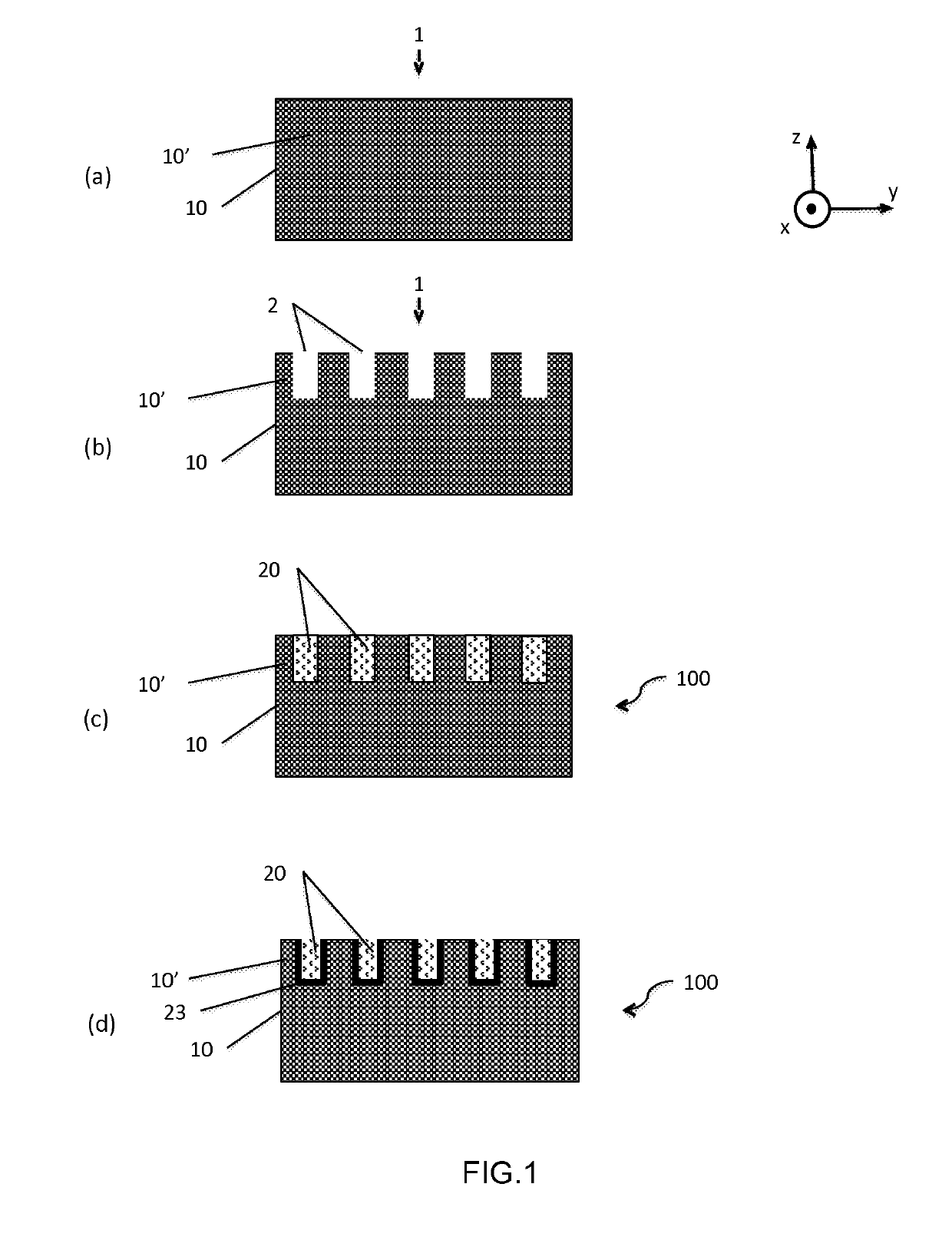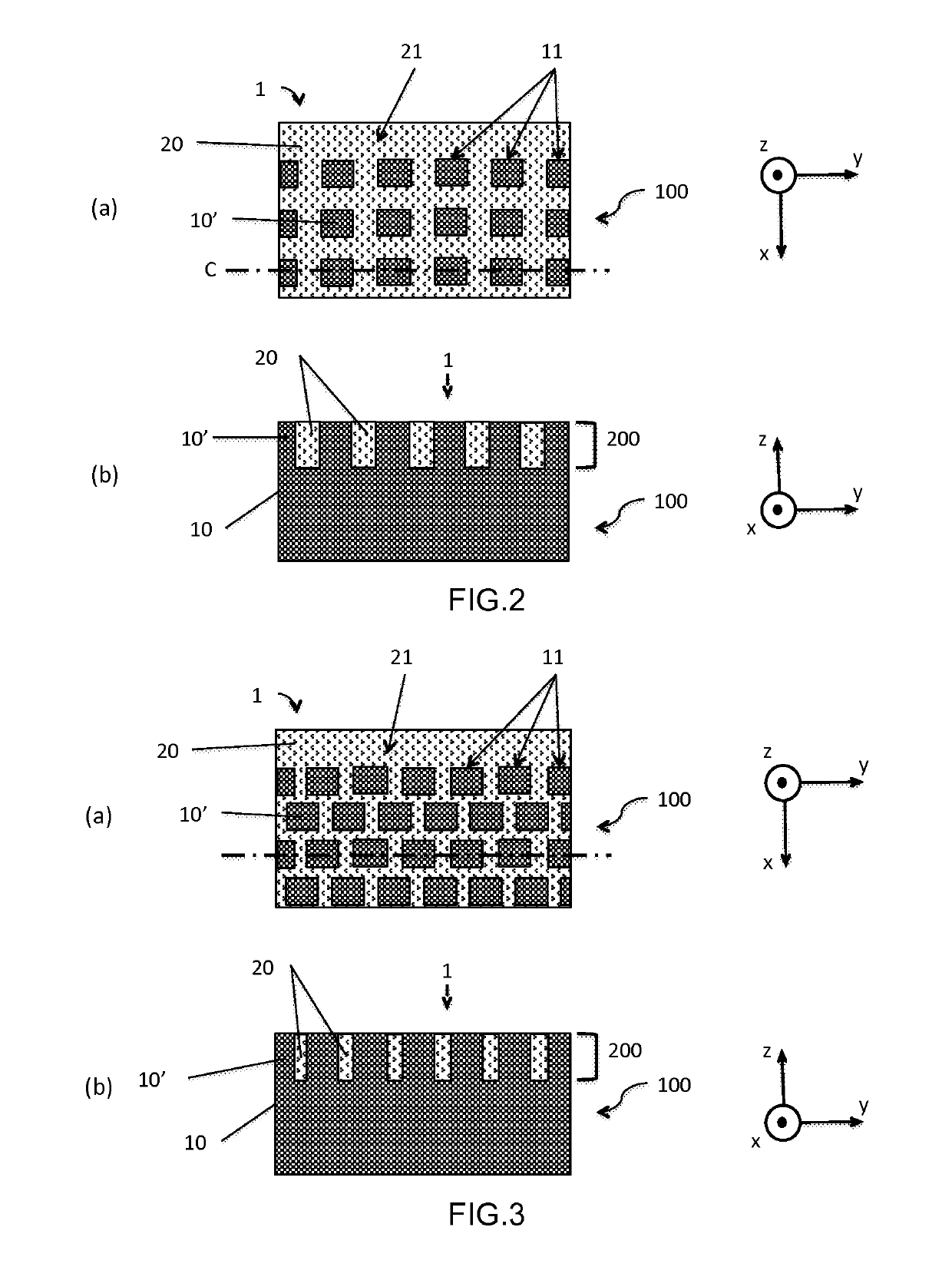Structure for radiofrequency applications
a radiofrequency application and structure technology, applied in the direction of basic electric elements, semiconductor devices, electrical equipment, etc., can solve the problems of reducing the density of the layer, the overall cost of the solution is too high, and the effect of reducing the effect of parasitic conduction and increasing the effect of resistivity of the substra
- Summary
- Abstract
- Description
- Claims
- Application Information
AI Technical Summary
Benefits of technology
Problems solved by technology
Method used
Image
Examples
Embodiment Construction
[0061]In the descriptive part, the same references in the figures may be used for elements of the same type. The figures are schematic representations which, for the sake of clarity, are not to scale. In particular, the thicknesses of the layers along the Z axis are not to scale with respect to the lateral dimensions along the X and Y axes, and the relative thicknesses of the layers between them are not necessarily respected in the figures.
[0062]The disclosure relates to a method for producing a substrate suitable for microelectronic radiofrequency devices, shown in FIG. 1, Panels (a) through (c). The method includes providing a support substrate 10 with a first semiconductor material 10′ whose resistivity is greater than 500 ohms·cm (FIG. 1, Panel (a)). Advantageously, the resistivity of the first material will even be chosen to be greater than 1,000 ohms·cm, or even greater than 3,000 ohms·cm. As illustration, the first semiconductor material 10′ may be monocrystalline silicon.
[00...
PUM
 Login to View More
Login to View More Abstract
Description
Claims
Application Information
 Login to View More
Login to View More - R&D
- Intellectual Property
- Life Sciences
- Materials
- Tech Scout
- Unparalleled Data Quality
- Higher Quality Content
- 60% Fewer Hallucinations
Browse by: Latest US Patents, China's latest patents, Technical Efficacy Thesaurus, Application Domain, Technology Topic, Popular Technical Reports.
© 2025 PatSnap. All rights reserved.Legal|Privacy policy|Modern Slavery Act Transparency Statement|Sitemap|About US| Contact US: help@patsnap.com



